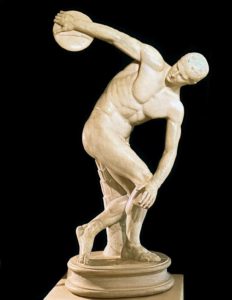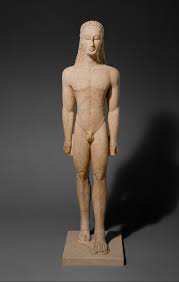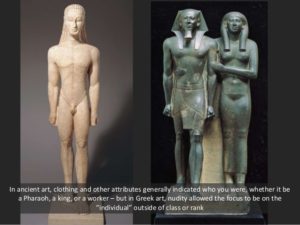Humanism in art is all about having the human body as the central focus. Humanism can be represented in whatever painting, sculpture, or work of literature. This concept focuses more on realistic artwork rather than focusing on the opposite. During ancient Mesopotamia and ancient Egypt, the art was filled with gods and supernatural creatures and it represented a lot of what the people at that time were focused on.  We can always refer to the Lammasu that came from ancient Sumeria. The Lammasu was known as a protective deity, and it consisted of a combination between a human and animal. This deity had a human head with a lion body and the wings of a bird. People would put this symbol of protection outside their homes.
We can always refer to the Lammasu that came from ancient Sumeria. The Lammasu was known as a protective deity, and it consisted of a combination between a human and animal. This deity had a human head with a lion body and the wings of a bird. People would put this symbol of protection outside their homes.

Hunefer “Book of the Dead” papyrus scroll can all be looked at to show how supernatural was heavily shown in ancient Egyptian. This scroll depicts Hunefer, who was a royal scribe, in the afterlife going through a process to see if he is fit to live in the underworld. We first see him in front of these deities with some type of ritual words or prayers underneath, as if he needed to perform these to them to pass. Later on, we see him with Anubis, God of the underworld, who is looking at these scales that determine whether Hunefer has lived a good moral life. In between the scales we this monster, Ammitt, who would devour Hunefer if he did not live a good life. We also see Toth who was in charge of recording everything. When the scales showed that Hunefer lived an ethical life, he was introduced to Osiris, Horus (Osiris‘s son), Isis (Osiris‘s wife), and Nephthys (sister). In essence, we can obviously see just how animated and how divine art was for Egyptians as well as Sumerians.

In contrast we see humanism start to arise in ancient Greece. We first start to see it in the sculpture of Kouros, 600 BCE. Kouros slightly resembled Egyptian statues, like the statues of Menkaure and Queen. But he contradicted them by being a bit more realistic in the body and in the details. Kouros was the representation of manhood and perfection at the time. He was also different in his pose and in the way he was created. He is positioned with one foot in front of the other and the only thing holding him up is his two feet which differ from Egyptian sculptures that would have something behind them holding them up. This statue had transcendence and it was made to trespass lifetimes.

Fast forwarding to 450-440 BCE, we see a completely revolutionized type of statue in Polykleitos Doryphoros. This statue, in particular, had such a focus on the human body. He had details that just were not seen in the past statues. We see more details in his abdomen, his pose, and in his arms that even show detail of veins. With his pose we even see movement (contrapasto), this figure has some kind of fragileness that was just not seen in the rest of the statues before him. It is much more precise in representing humans.
Overall, we see how much art has evolved during the centuries. It went through different stages and this classical past was very much emphasized on humanism. It was a such a significant thing that we even saw it present in their myths of gods. The Greek gods and their stories sounded a lot like human problems. These deities had human features and human woes. It’s very interesting seeing just how much impact humanism had on artwork.


















